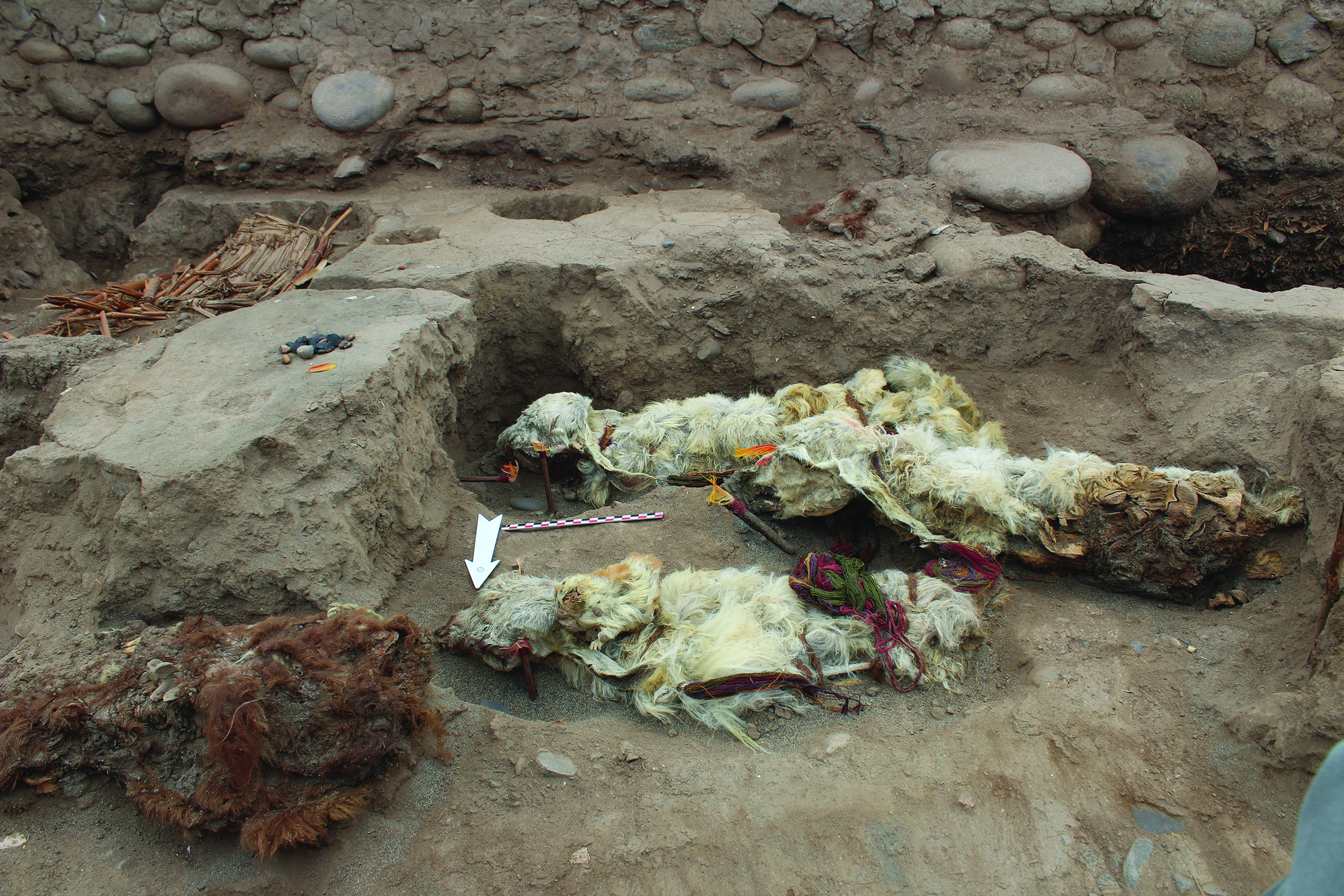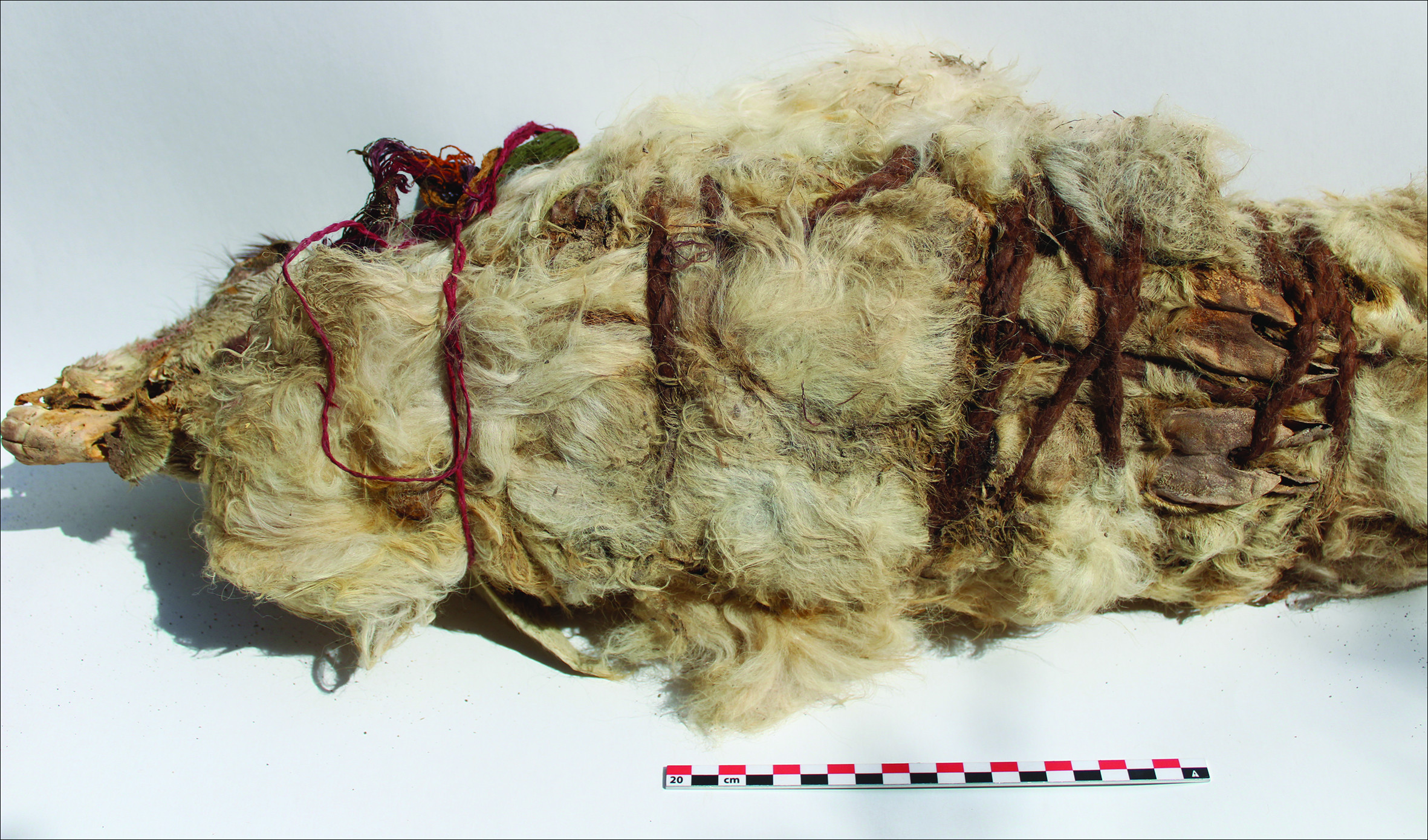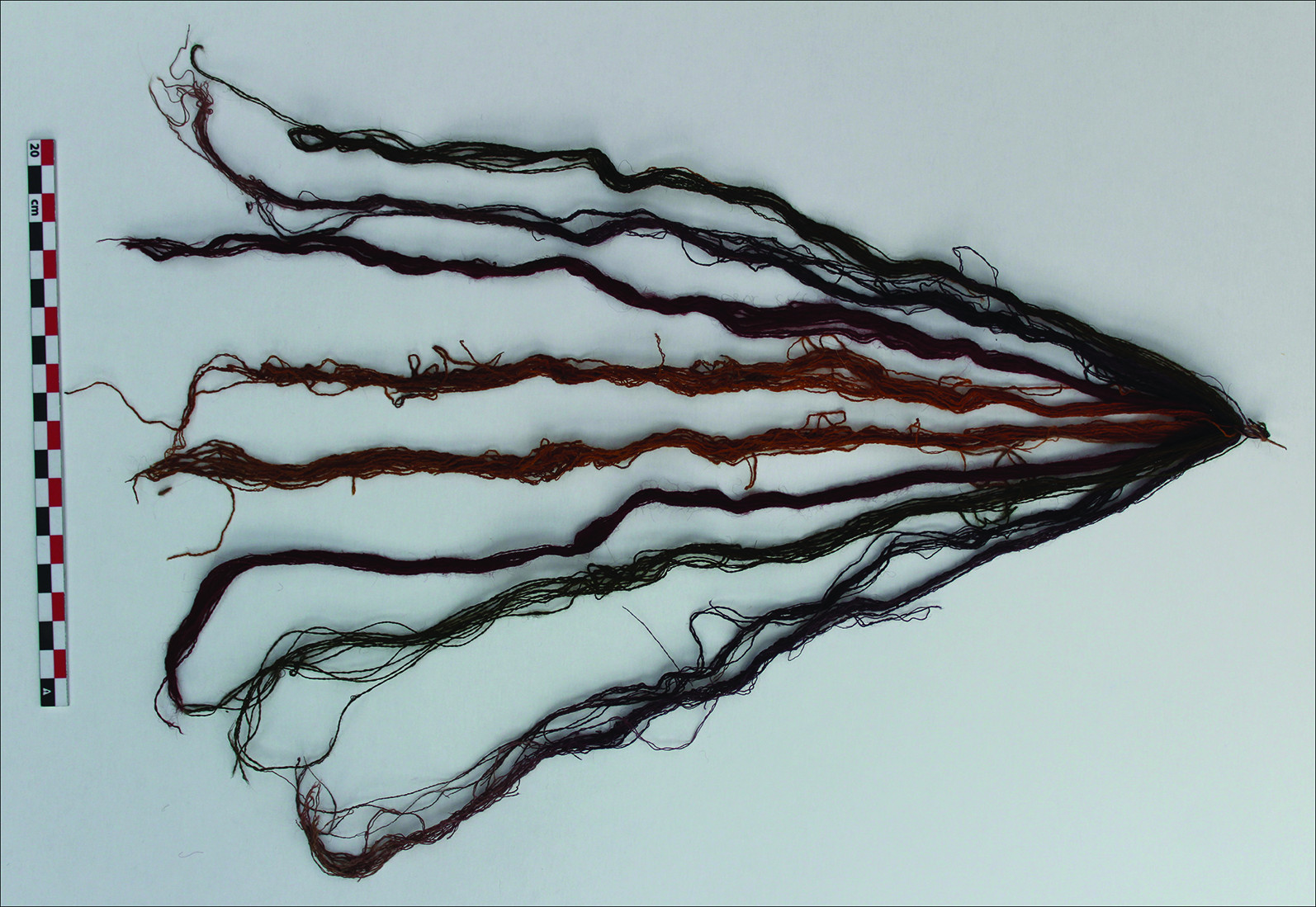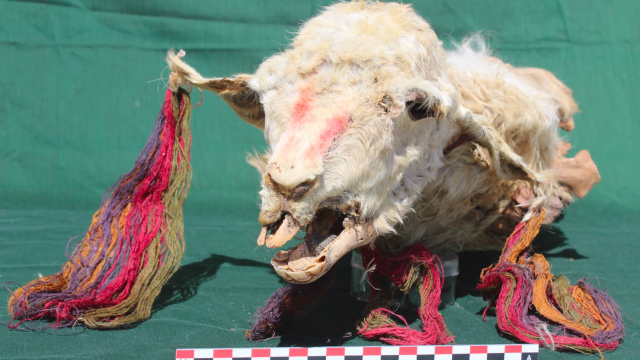Four beautifully preserved llamas have been discovered at a ritual sacrifice site in Peru. The llamas, still wearing their colourful adornments, serve as the first archaeological evidence linking the ancient Inca to the practice.
The llamas, three white and one brown, were ritually killed over 500 years ago at a Peruvian site called Tambo Viejo. For the Inca, llamas were the preferred sacrificial animal; “their ritual value” was “second only to that of human beings,” according to a new paper published today in Antiquity. The animals were adorned with colourful bracelets and string, reinforcing their value to the gods.
Ethnographic accounts from Spanish colonists describe the sacrifice of llamas by Inca people. These accounts claimed the Inca would sometimes sacrifice 100 llamas at a time, in hopes the gods would return the favour in the form of favourable weather, among other requests.

Incredibly, however, the discovery at Tambo Viejo marks the first time that archaeologists have uncovered definitive evidence of the practice, according to Lidio Valdez, the lead author of the new study and a researcher from the University of Calgary. A team of archaeologists from the Universidad de Huamanga in Peru also assisted with the research.
Prior to this discovery, archaeologists had uncovered hundreds of ritually sacrificed llamas, as well as children, along the northern coast of Peru, but these were dated to the pre-Inca Chimú civilisation (the Inca Empire vanquished the Chimú around 1475 CE). In an email, Valdez said the Inca were following something that had been practiced in the region long before they hit the scene.
“However, as in the case of the Chimú, the llamas are burial offerings,” explained Valdez. “In contrast, the llama offerings from Tambo Viejo are not burial offerings, but dedicatory offerings to the deities, namely to the creator god Viracocha and to the Sun.”

He said it took so long to find physical evidence of this practice among the Inca because only a few sites have been properly investigated and the few Inca centres that have been excavated are located in regions where preservations tend to be poor. At Tambo Viejo, which is situated along the southern coast of Peru, the conditions are very dry, allowing for the excellent preservation of organic remains. It also helped that the Inca placed sand over the llamas during burial.
The sacrifices at Tambo Viejo date back to a time shortly after the Inca conducted an amicable annexation of the region. The Empire converted Tambo Viejo and several other nearby localities into new administrative centres. Previous work at the same site by the same team uncovered dozens of ritually sacrificed guinea pigs, which were, like the llamas, adorned in colourful decorations.
[referenced id=”1156411″ url=”https://gizmodo.com.au/2019/04/400-year-old-sacrificed-guinea-pigs-wearing-colourful-earrings-and-necklaces-discovered-in-peru/” thumb=”https://gizmodo.com.au/wp-content/uploads/2019/04/13/tacknjrvscc817sx4rhb.jpg” title=”400-Year-Old Sacrificed Guinea Pigs Wearing Colourful Earrings And Necklaces Discovered In Peru” excerpt=”An intriguing new discovery in Peru shows ritually sacrificed guinea pigs were decorated with colourful earrings and necklaces by 16th-century Incas — a finding that comes as a complete surprise to archaeologists.”]
The archaeologists found the four llamas beneath a floor while excavating a ruined structure. A fifth llama was also found, but it was badly degraded. Their adornments, made of camelid fibre (from llama or alpaca) suggest they were being offered to gods as special gifts. Previous work showed that brown llamas were sacrificed to the creator god Viracocha and white llamas to the Sun, the primary Inca deity. These llamas, therefore, “were very important offerings,” said Valdez.
“This is the first of its kind. There is nothing comparable,” said Valdez. “Now we know that Inka animal offerings were highly adorned.”
Close examination of the well-preserved llama remains revealed “no evidence of cuts to either the throat or the diaphragm, suggesting that the llamas could have been buried alive,” as the authors wrote in the study. What’s more, the “tying of the animals’ legs may also support this interpretation.” Grimly, if this is correct, it “would parallel the evidence for the burial of living human sacrifices” documented elsewhere. As a final gesture, the Inca placed tropical bird feathers atop the llamas’ graves.
Radiocarbon dating suggests the ritual occurred around 1447 CE, so approximately 573 years ago.

Spanish colonizers claimed that Inca ritual sacrifices were a plea for successful harvests, healthy herds, and victory against their enemies. The new paper points to a markedly different purpose: a gesture of goodwill to citizens living in a newly annexed territory.
Having recently arrived, the Inca likely upset the pre-existing sociocultural order of things, which the Inca attempted to assuage by “befriending the locals and providing gifts and food to the conquered peoples, while also acknowledging the local huacas [religious monuments] and gods,” wrote the authors, adding that the Inca “believed that it was not possible to take something without giving something back,” which implies that the “annexation of peoples and their lands required an exchange to normalise the otherwise abnormal situation.”
Interestingly, the feathers on the llama graves may have been a attempt by the Inca to further cement their ownership over the newly acquired territory, the authors speculate.
At the same site, the archaeologists also uncovered large ovens and other evidence of elaborate feasts. As Valdez points out, these ritual sacrifices weren’t morbid or dour events — they were celebrations involving the sharing of food in the form of feasts.
“I am convinced that the rituals that included the animal sacrifices included other actions, such as singing, dancing, and so on, that do not necessarily leave behind tangible material evidence for the archaeologists to recover,” he said.
As an interesting final aside, Valdez’s first impression of the Tambo Viejo site was that it was uninteresting. He said he ignored the site for the longest time, paying closer attention to earlier sites before finally deciding to investigate Tambo Viejo.
“I believe this was the right decision,” he said.
We wholeheartedly agree.
